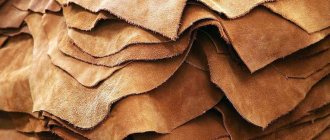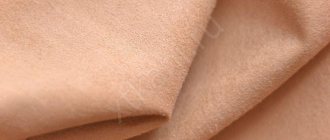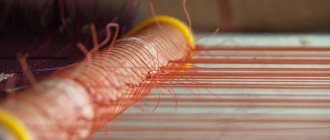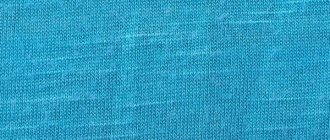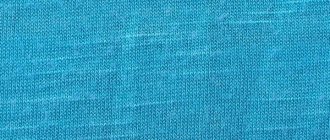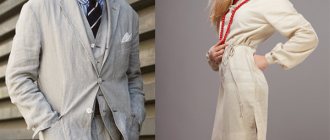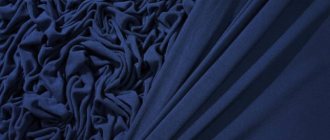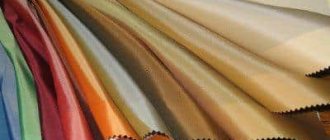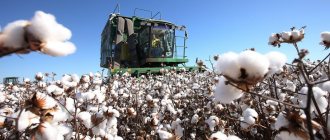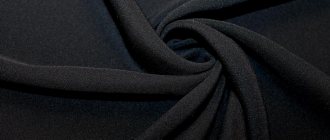Viscose fiber is made from natural raw materials, so it is in many ways related to natural fabrics, in particular cotton. And this misleads many: which is better of the two fabrics - natural cotton or artificial viscose, which fabric to choose? Or maybe there is a compromise? The whole question is for what purpose to compare and what is important to find out.
What do these materials provide: description
When choosing clothes, buyers pay attention to the comfort and naturalness of the material. The modern market is dominated by synthetic fabrics, but there is a considerable selection of products made from natural ingredients. How to recognize them and make the right choice?
Natural materials
Cotton
One of the representatives that consists only of natural materials is cotton. It is the thinnest and short fibers that are twisted together. It has high strength and resistance to chemicals used for fabric care. Withstands fairly high temperatures, up to 1400 C. Hygroscopicity indicators are 18-20%. But, there are low rates of deformation, which leads to the fact that the material does not hold its shape. That is, cotton wrinkles a lot. In addition, it wears out quickly and dries slowly.
The positive characteristics of cotton include:
- soft and light to the touch;
- excellent breathability, which makes it indispensable when wearing in the heat;
- lends itself well to coloring.
Using cotton for textile production
Among the existing disadvantages, note:
- wrinkles very quickly;
- during washing it can be deformed and shrink;
- with prolonged exposure to light it becomes yellow.
Cotton has a huge range of applications. It is used to make underwear, bed linen and table linen. They are also used to create a huge range of both women's and men's clothing. Used for upholstery and textiles. High-density cotton is used in the processing of collars on men's shirts.
Cotton products have different applications
If you add 5% lycra to 95% cotton, what kind of fabric do you get? A variety that is significantly less likely to shrink and wrinkle.
You might be interested in what fabric is used for bathroom curtains
Viscose
Viscose is created from cellulose of natural origin. The thickness of the fibers, their strength, and therefore wear resistance, depend on how the raw materials are processed. In addition, the texture of the fabric is also different. It may look and feel like silk, cotton or wool. Therefore, you can even find a viscose jumper on sale.
The richness of the viscose structure
Additional Information! The process of creating fibers from cellulose was invented back in 1891 in England. And it was patented by the Frenchman J. Brandenberger in 1902, who devoted his entire adult life to viscose.
Properties of viscose:
- Excellent breathability. That is why such a variety as staple is widely used for sewing summer clothes - sundresses, robes, trousers.
- Softness. Thanks to this property, a wide range of bed linen is created, even for children.
- It retains its appearance perfectly, does not wear out or fade.
- Attractive appearance, pleasant texture.
Viscose has many varieties depending on the processing method.
There are many varieties of viscose.
For example, what kind of fabric is made from 95% viscose and 5% elastane. The answer is simple viscose with elastane, the latter will give the fabric elasticity.
Synthetic fibers
In 1935, after 8 years of research, polyamide 6.6 was obtained in the chemical laboratory of the DuPont research concern, which would later go down in history under the name nylon as the first commercially successful synthetic polymer.
DuPont began with experiments on cellulose, but later came to a formula of “coal, water and air.” Currently, the material used to produce nylon is petroleum.
How the nylon era began
DuPont's business goal was to produce "one chemical formula that could be used in industry." In addition to polyamide, DuPont produced neoprene and synthetic rubber.
The commercial success of a synthetic analogue of silk - nylon, which turned out to be a popular fiber in the production of parachutes, rigging and other things necessary during the Second World War, forced DuPont to think about the synthesis of wool.
In 1958, acrylic, a synthetic analogue of natural wool fiber, became widespread. The introduction to the market did not become as triumphant as nylon was: acrylic turtlenecks were covered with pills after the first wash and wear, knitwear became electrified, consumers did not want to spend money on a short-lived and capricious item. As is usually the case in the fashion industry, acrylic still found its niche thanks to its claim to innovation.
How nylon stockings beat silk stockings
How to recognize cotton and rayon fiber
The most common way to check whether a fabric is cotton or synthetic is by burning several threads. After examining how cotton and viscose burn, it will immediately become clear whether the consumer purchased natural fabric or synthetic fabric, for example, made from nylon. Cotton or rayon threads turn to light gray ash, which crumbles into a fine powder when touched. Synthetic threads fuse and form a resinous lump.
How to recognize cotton and viscose fiber, since they are of natural origin? There are several ways to identify cotton or viscose:
- Differences can be determined by wetting the fabric. Cotton shrinks and its strength increases. Viscose, on the contrary, absorbs water well, but becomes too vulnerable. Therefore, when you spray a little liquid onto a viscose fabric, a slightly swollen ball forms at the point where the droplets hit. This is excluded on the cotton sample.
- The uniformity of coloring of the fibers on the product allows you to distinguish viscose. This is due to the difference in the dyeing process. If a pattern is applied to viscose fabric after its production, then with cotton the opposite is true. First, the threads are dyed, and only then the production of the canvas itself begins.
- When washed, cotton shrinks, and viscose can stretch. That is why it is not recommended to unscrew it.
You might be interested in Description of corduroy and microcorduroy fabric: features of use
Brightness and uniformity of coloring is one of the signs of differences between types of fabric
Natural fibers
Humanity was the first to use a group of natural fibers. These included primarily animal wool and plant fibers, among which flax was predominantly used.
Animal wool was relatively easy to obtain. In Europe, sheep were raised to obtain wool; in Asian and Eastern countries, the wool of camels, goats and others was used to create yarn and fabrics. Now, if the label indicates wool in the composition, then with a high probability we can say that it is sheep. Sometimes you come across exotic varieties, such as vicuna wool.
At first, animals were shorn or combed to obtain wool, but later methods appeared that could hardly be called humane: special preparations cause complete hair loss, and even though this saves the sheep from having to endure shearing, it is unlikely to have a positive effect on its body.
The collected wool is processed: combed, combing out debris and separating the hairs by length and thickness. Long and thin fibers are most valued.
In Europe, flax was an alternative to wool for many centuries: it almost always produced a rich harvest, and although the stems required processing, the production of yarn was considered efficient. The flax was dried, kneaded, getting to the soft core and getting rid of unnecessary outer layers, soaked and dried in the sun - this helped to bleach the fibers, and sometimes they were frozen for the same purpose - to give softness and bleach.
The processed fibers were treated in the same way as wool: yarn was spun from which clothes were knitted or woven, and then cut and sewn.
In Asia and places with similar climates, cotton was cultivated. The most labor-intensive process was the collection process; It is now mechanized, but unique varieties are still picked by hand to reduce the cleaning process and conserve the amount harvested.
Later, the group of natural fibers was supplemented by silk. According to legend, the wife of the Chinese emperor was drinking tea in the shade of a mulberry tree, and a silkworm cocoon fell into her cup. In the hot tea, the cocoon began to unfold, and the lady noticed how thin and beautiful the thread turned out to be. For centuries, the secret of obtaining silk was kept in China; attempts to export cocoons or silkworms abroad were severely punished, but one day there were lucky people who managed to do this. So silk began to be grown in different countries. At one time, silk farms, located in the attics of houses, were popular in Italy. During the Soviet years, silk began to be grown in Crimea.
By the 1940s, the main supplier of silk to the United States was Japan, receiving petroleum products in return, but due to the conflict, strict restrictions were introduced on the import of this fiber, which caused a shortage of raw materials for manufacturers of women's stockings and parachutes, and pushed the industry to switch to synthetic silk - nylon.
Comparison: which is better
Due to the fact that viscose is created from plant fibers, as well as the high-tech process, viscose is often difficult to distinguish from cotton.
Similarities:
- tactile sensations cannot be distinguished;
- there is no difference in moisture absorption rates;
- identical air exchange properties are determined.
Differences:
- Cotton is a durable material and retains its properties in any condition. When wet, viscose loses most of the listed properties. It is quite easy to tear and wrinkles quickly.
- Fabric price.
A combination of these two materials is often used. Combining them allowed viscose to increase its strength, but when wet it is slightly worse. In addition, it shrinks after wetting. Recently, a type of viscose that is similar to natural cotton has gained wide popularity. This type is devoid of most of the negative characteristics of viscose and cotton.
Viscose production
How is viscose-cotton blend made?
The main component used to produce viscose is wood cellulose. Even 100 years ago, the manufacturing process was quite labor-intensive. Modern technologies make it possible to work much faster, which may explain the huge range of products made from a viscose-cotton blend.
Children's textiles and clothing made from viscose-cotton blend
The process consists of several stages:
- wood chopping;
- cooking the resulting wood chips in a special alkaline solution;
- processing with the addition of an acid composition;
- mixing with a certain amount of cotton;
- processing mass into threads on a machine.
Drying threads
Important! One of the main ones is the process of drying the fibers, since it is this process that is responsible for the strength of the fabric in the future. Excess moisture has a detrimental effect on viscose.
Description of cotton
The modern market is very generous with artificial fibers, so natural fabric is highly valued. Cotton is the latter. The basis is processed cotton fruits - bolls that, after ripening, bloom and become like small clouds of cotton wool.
The quality of the material is directly related to the length of the original fiber. The longer it is, the denser the fabric turns out. Cotton can be made from natural raw materials or with the addition of artificial fibers.
Cotton weaving is found:
- twill;
- finely patterned;
- linen;
- with fleece;
- satin.
The density and softness of the material depends on this.
Properties of viscose-cotton fabric
Cotton is one of the natural materials that has high strength and elasticity. If it is combined with viscose, then the indicators of these properties are slightly reduced, but a number of advantages also appear:
- The electrostatic effect is completely eliminated;
- brightness and color saturation after the dyeing process and maintaining the brightness of shades after repeated washings;
- softness and lightness, unlike natural cotton analogues;
- The complete absence of synthetics allows the fabric to be used to create children's clothing, suitable for people suffering from allergic reactions.
You might be interested in this. Detailed description of cotton: fabric properties
Children's clothing made of viscose is bright and comfortable
Viscose
Viscose threads are produced by processing cellulose . The characteristics of matter depend on the processing method. Some products look like wool or cotton. Viscose is even called rayon, as it is similar to delicate fabric, but costs much less.
The production process consists of 4 stages:
- Mixing cardboard solution with dye.
- Passing the solution through a filler plate and forming threads in an acid bath.
- Processing of the resulting fibers.
- Drying.
Viscose has high air conductivity , which makes it possible to sew light summer clothes from it. Clothes made from such a product will be warm in winter and cool in summer, as it has good thermal conductivity. Even after numerous washes, the shape is retained and the colors remain bright for a long time.
Artificial silk is used to make clothing, bed linen, household textiles (towels), carpeting and even artificial fur.
Viscose requires careful care: hand washing, flat drying and ironing. It is not recommended to strongly wring things out and dry them on lines - this can deform the clothes.
Reviews
Olga, Taganrog: “I want to dispel prejudices about the properties of viscose. I speak about this as a doctor. The best option for sultry heat is clothing made of viscose, or rather staple. The fabric does not contain toxic substances. Excellent air permeability, which prevents excessive sweat formation. In addition, it perfectly absorbs moisture. All this will prevent the proliferation of bacteria and protect against germs. And the brightness of the designs will add variety to your wardrobe set and lift your spirits.”
Victoria, Evpatoria: “I always preferred natural cotton. But recently a friend advised me to choose a viscose T-shirt. I doubted it for a long time, but I took the risk and did not regret it. The sensations are no different from products made from katon. Showed itself well in the wash and does not shrink. The only thing is you can’t twist it. But it doesn’t wrinkle when worn. I recently bought a couple of things for the child.”
Svetlana, Vologda: “I love cotton products. The naturalness of the material is captivating. I especially love cotton textiles. With its help, such comfort is created in the house, reminiscent of childhood, when I visited my grandmother in the village. Unique texture, delicate shades, and most importantly durability. This is very important if you use, for example, cotton tablecloths, which have to be washed several times. They will never break."
Cotton tablecloths
After familiarizing yourself with all the advantages of each material, the consumer will be able to make his own choice. It all depends on personal preferences and habits. Using products made from a mixture of cotton and viscose will be a compromise for those who find it difficult to decide.
